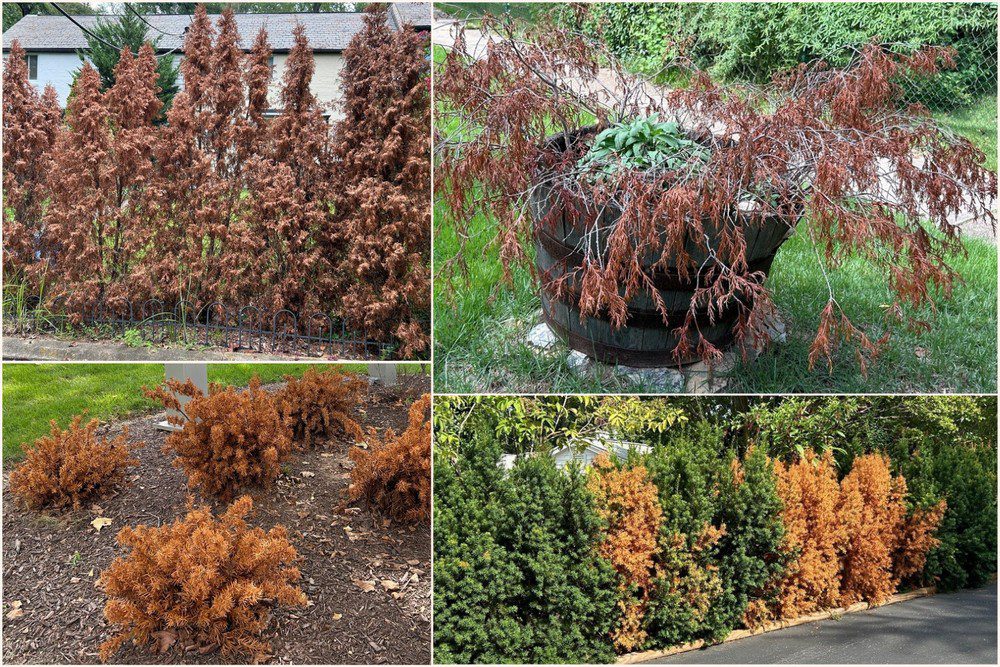

We had two long hot and dry spells in the DC area this summer, and their impact can be seen all over town. Lots of dead conifers, especially Yews and Arborviteas. (Junipers seemed to thrive.)

The drought also killed some broad-leaf evergreens, like these Cherry Laurels.
 And these grand old Rhododendrons.
And these grand old Rhododendrons.
- Water probes are cheap, and even a “cheap extra long screwdriver” can be used as a dipstick. More about that on the Garden Professors Blog.
- From moderator Linda Chalker-Scott: “I can’t overemphasize the importance of a deep layer of arborist chip mulch. Water and arborist wood chips (in addition to proper planting) are crucial for woody plant survival in hot, dry conditions.” (Here’s more from Linda about wood chips.)
- Some plants just can’t cope.
- Don’t amend the soil, and follow other good planting techniques (including suggesting root-washing, something I’ve ever done.) Though I do carefully untangle roots as needed after removing them from their pots. “Intact root balls will prevent proper root establishment and amended soils impede water movement.”
- This is why the literature tells you to get a rain gauge and water your trees and bushes if you haven’t had rain in a week,

Really makes you reconsider the whole notion of monoculture hedges, or whatever this is at my local subway station.

Reminds me of the Arborvitae hedge that I hated and got rid of after this happened. Doesn’t it look like hedges sacrifice one or two of their members so the others can live?
Is this Root Depth Graphic Just Made Up?
Turning to deciduous shrubs, I didn’t lose any during this year’s drought, but only because I noticed that my Ninebark shrubs – all well established – were crispy and half-dead after four weeks without rain, so I started watering them.
On the other end of the spectrum are the many Spireas I grow and have grown for decades that have never succumbed to drought, despite being ignored by me.

Which is why I’m so puzzled by this graphic, found here and elsewhere online, depicting the native Ninebark’s roots MUCH deeper than the nonnative Spireas’s. I wrote to that site inquiring about the source of the graphic but got no response. (A reverse image search on Google yielded 30 more sites where it’s displayed, with no source mentioned.)
I questioned that graphic because I assumed that deep roots mean greater drought tolerance. (And I’ve reported on root-depth misinformation.) To check that assumption I turned to another source – my very own “garden professor” at the University of Maryland. This semester I’m taking Karen Petroff’s class in woody plants, so I asked her about the connection and her answer was: root depth is just one of the many factors determining drought tolerance, exactly what the Garden Professors Blog folks told me.
So for reliable plant information, my faith in garden professors – online or in person – is confirmed once again! They’re doing their damnedest to dispel myths, misinformation, gross generalizations and made-up graphics.
Evergreen Death by Drought! Plus, a Puzzling Graphic about Root Depth originally appeared on GardenRant on October 11, 2024.
The post Evergreen Death by Drought! Plus, a Puzzling Graphic about Root Depth appeared first on GardenRant.
